If you are watching a group of videos today, I hope you watch this one first. Have you already watched a few videos before this one? Then I would ask you to save this video for last.
I’ll explain why throughout this article. I’m going to talk about the Serial Position Effect and Curve. Whether you are trying to learn something new, or you want to share information with people, you can use the Serial Position Effect and Curve to increase the chances that the information will be remembered.
What Is the Serial Position Effect?
The Serial Position Effect is the psychological effect that seems to happen when a person recalls the first and last items in a list more often than the middle items.
For example, let’s say you have a list of information. We can use a grocery list for this example. You have milk, eggs, butter, hummus, and carrots. When it’s time to hit the grocery store, you realize that you left your list at home. What items are you most likely to remember from that list?
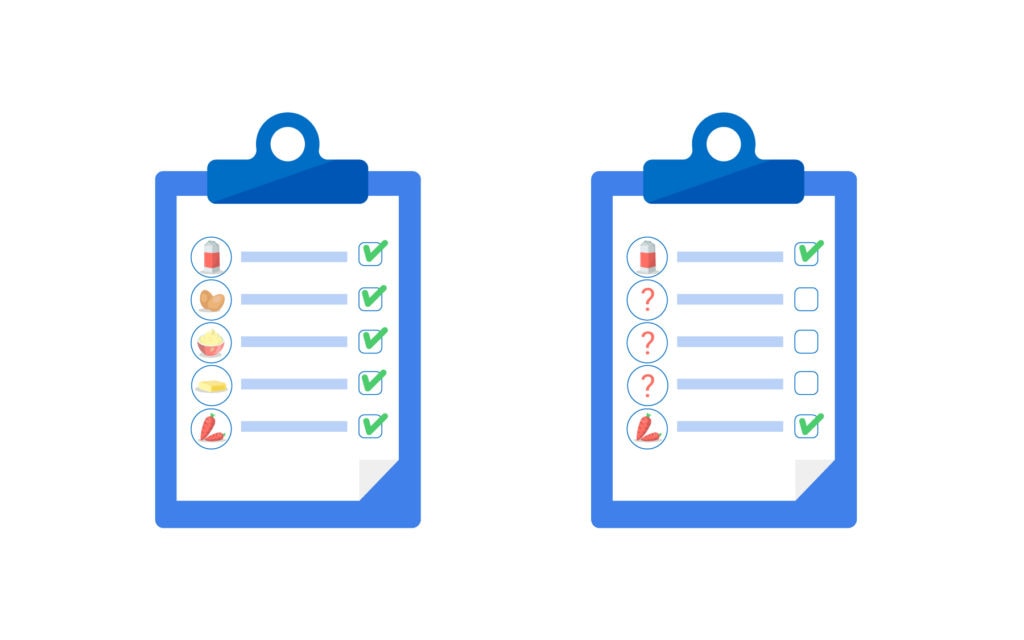
Milk? ...Carrots?
These are the answers predicted by the Serial Position Effect.
This term was coined by German psychologist Hermann Ebbinghaus.
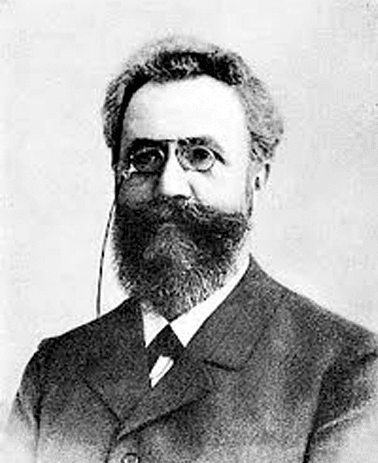
He theorized that people remember information more strongly based on when it’s presented.
People are most likely to remember the information presented at the beginning (at the top of the list) and at the end (the bottom of the list.) Of course, this is not going to be entirely accurate for every single case, but if you had to bet what people are going to remember, stick with the first and the last pieces of information.
Ebbinghaus did a lot of work with memory, although he was his main test subject. Throughout his work, he was also the psychologist to coin the terms “forgetting curve” and “learning curve.” You can learn more about his forgetting curve here. But if this is your first time hearing about Ebbinghaus, you’ll probably associate him with the Serial Position Effect and Curve first.
Ebbinghaus’s work with the Serial Position Effect later went on to support Atkinson and Shiffrin's model on the three memory stages.
There are two effects within the Serial Position Effect that give us more information about recall and memory, both of which are connected to Atkinson and Shiffrin’s work. These two effects are called the primacy effect and the recency effect.
The Primacy Effect
As research in memory developed, scientists started asking more specific questions about recall. (They also started to conduct more test studies with actual subjects.)
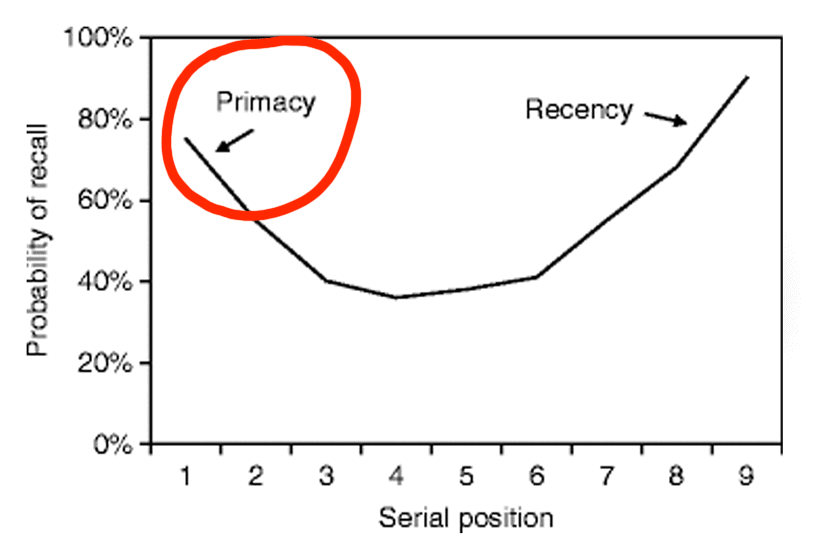
If you are more likely to remember information presented first and last, what happens to the middle information? What happens if you need to learn a longer list of information? What parts of the beginning, middle, and end are you most likely to remember? How long will you remember them for - does the order affect where the memory goes in your brain?
One of the studies to answer this question was the “Murdock Study.” The Murdock study was conducted in 1962, where Bennet Murdock gave participants a list of up to 40 words to remember and then asked them to recall as many as they could.
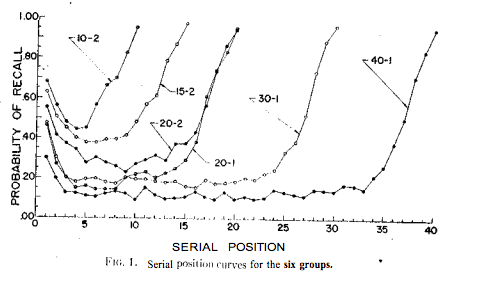
As you can see in the absolutely great data above, the probably of recall increases a bit for the first few words, and then increases greatly at the end. It doesn't matter if there is 10 words in the list, or 40 words in the list, the items last shown to the participants had the highest probability of being recalled.
The results supported Ebbinghaus’s theory - the words at the beginning and the end of the list were easiest to remember.
The primacy effect focuses on the information at the top of the list. This information is more likely to end up in your long-term memory. Psychologists believe part of the reason for the primacy effect is that the items you learn first simply are in your head longer.
The Recency Effect
So what about the items at the end of the list? Are these likely to end up in your long-term memory? Are they more, or less, likely to be remembered than things in the beginning of a list?
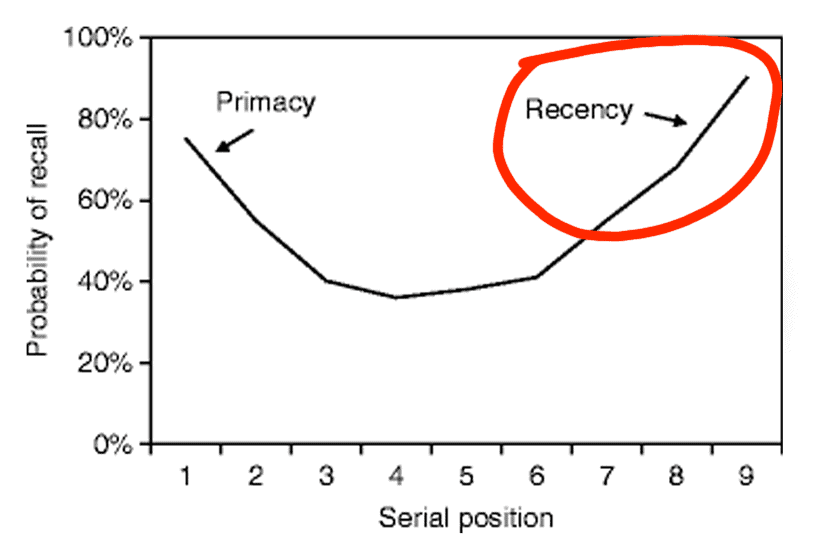
The answer to the questions can all be found in the Recency Effect.
Glanzer and Cunitz were the pioneers on studying this effect. In 1966, they gave 240 men a list of words to memorize. They asked the men to recall some of the words. Not surprisingly, the words at the beginning of the list and the words at the end of the list were the most memorable.
But Glanzer and Cunitz went one step further with their test. They separated the men into two groups. The first group was the control group. The second group were given a 30-second task after they learned the words. The task was created to distract the participants before it was time to free recall the words that they had learned. This would ensure that their short term memory was halted.
Both groups supported the presence of the Serial Position Effect, but there was one big difference in the way these two groups remembered the words.
The group that didn’t have a distraction task was able to recall the words at the beginning and the end of the list with equal ability. They were both significantly more memorable than words in the middle.
The group with the distraction task was able to remember the words at the beginning of the list really easily. However, they were not as likely to remember the words at the end of the list.
The words at the end of the list were still more memorable than the words in the middle, but they didn’t stick as well as the words in the beginning of the list.
The distraction task really messed with the participants’ ability to remember the words.
These results led Glanzer and Cunitz to believe that while the words at the beginning of the list were more likely to be stored in long-term memory, the words at the end were more likely to be remembered in the short term. There is limited space in the area where short-term memory is held, so once the distracting task took place, a lot of the later words were dropped from the person’s memory.
The Serial Position Curve
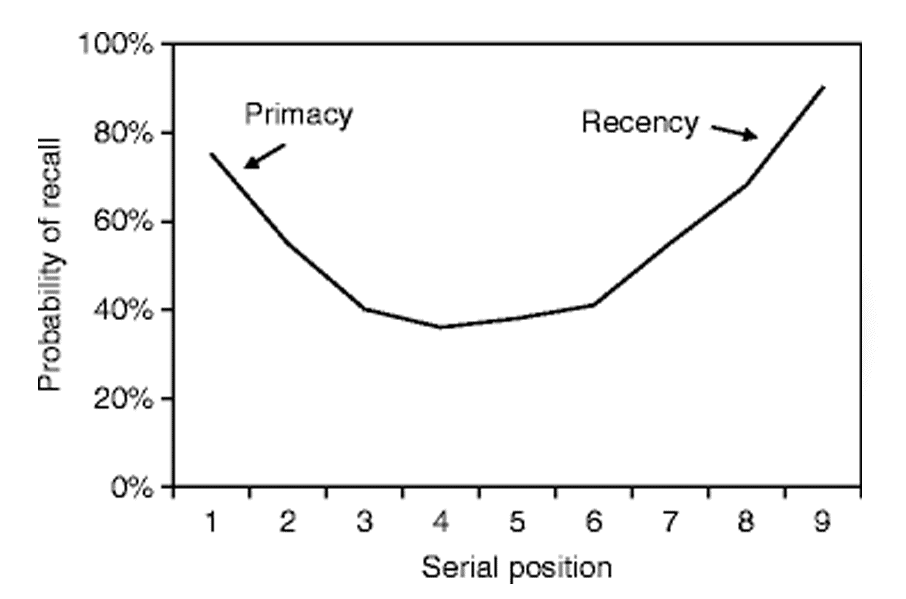
When are you more likely to remember things? Take a look at the Serial Position Curve. This curve, which simply looks like a U, shows when a word is presented vs. how likely people will remember it.
First and last pieces of information are most memorable - things in the middle tend to get lost.
Examples of Primacy and Recency
A great example of the primacy and recency effect being used together is with drug commercials in the United States. Because of how the US economy works, consumers are encouraged to ask their doctors about drugs they’ve seen advertised. When a doctor’s patient asks about a particular drug, the doctor is more likely to prescribe that drug, so United States television has numerous commercials made by pharmaceutical companies that encourage consumers to ask their doctor about specific drugs. However, those pharmaceutical companies are required by law to include all possible side effects of their drugs - every side effect, even very unlikely ones. As with any drug you put into your body, the list of potential side effects are numerous and can range from headaches to death.
But you might have already seen where I’m going with this, especially since I just said the word list. That’s right - as with anything else that can be listed, the listing of side effects in drug commercials heavily uses both the primacy and the recency effect. And the pharmaceutical companies know this, and use it to their advantage.
First, the primacy effect. Drug commercials always open with the problem that their drug is solving. They often have an actor saying something like, “My back always hurts, but this drug helped me and fixed my problem. Now I can walk around and play with my children again!” This is the primacy effect in action. You have been primed to think something very positive about the drug.
Next, they list the numerous potential side effects of the drug - as they are required to by United States law. However, this list is the “middle” part of the commercial, which gets blurred in your memory. Plus, you’ve been primed with the positive message, so you’re going to base future parts of the list on the positive thing you’ve already heard. “This drug can lead to headaches” might make you think, “Well, that’s a small price to pay to fix my back problem.”
And then finally, like with all other commercials, the recency effect is used. The commercial ends by restating how the drug will improve your life and then encouraging you to talk to your doctor about it.
This means that you will remember the first thing you heard, “This drug will help me,” forget the middle stuff about all of the potential side effects, and finally remember the last thing you heard, “ask your doctor about this.”
So, the primacy and recency effect are both clearly important to keep in mind when watching an advertisement - or when making one, if you’re into marketing. But how else can we take advantage of this interesting effect?
Well, these two effects aren’t just about advertising - they are about how our brains learn. So, if you want to learn better, you need to keep them in mind.
How to Use the Serial Position Effect and Curve
There are a lot of ways to use the serial position curve in communication, education, business, you name it.
When you are writing a speech, what information is the most important for listeners to remember? When you are learning a speech, how can you arrange your practice so that each part of the speech is presented at times when you will remember it?
When you're meeting someone for the first time, ask them for their name first so that you are more likely to remember it.
If you’re memorizing information for a test and you’re using flash cards, make sure you shuffle the flashcards each time before you start. This will ensure that every card gets a chance to be at the front and back of the deck. If you don’t shuffle the cards, you’ll always forget the same cards in the middle of the deck.
Another thing to keep in mind is taking breaks while studying. A ten-minute break can do wonders for helping you learn, because it resets your learning cycle. If you study for twenty minutes and then take a ten-minute break, you will remember your first few minutes of studying and your final five minutes of studying before that break. Keep studying that way, and you will minimize the number of things that end up in that blurred middle part of the studying session.
If you instead take no breaks and elect to just study for two hours straight, you will still only remember the first and last things you studied, making a majority of the time you just spent studying fall into that blurred middle part of the list.
